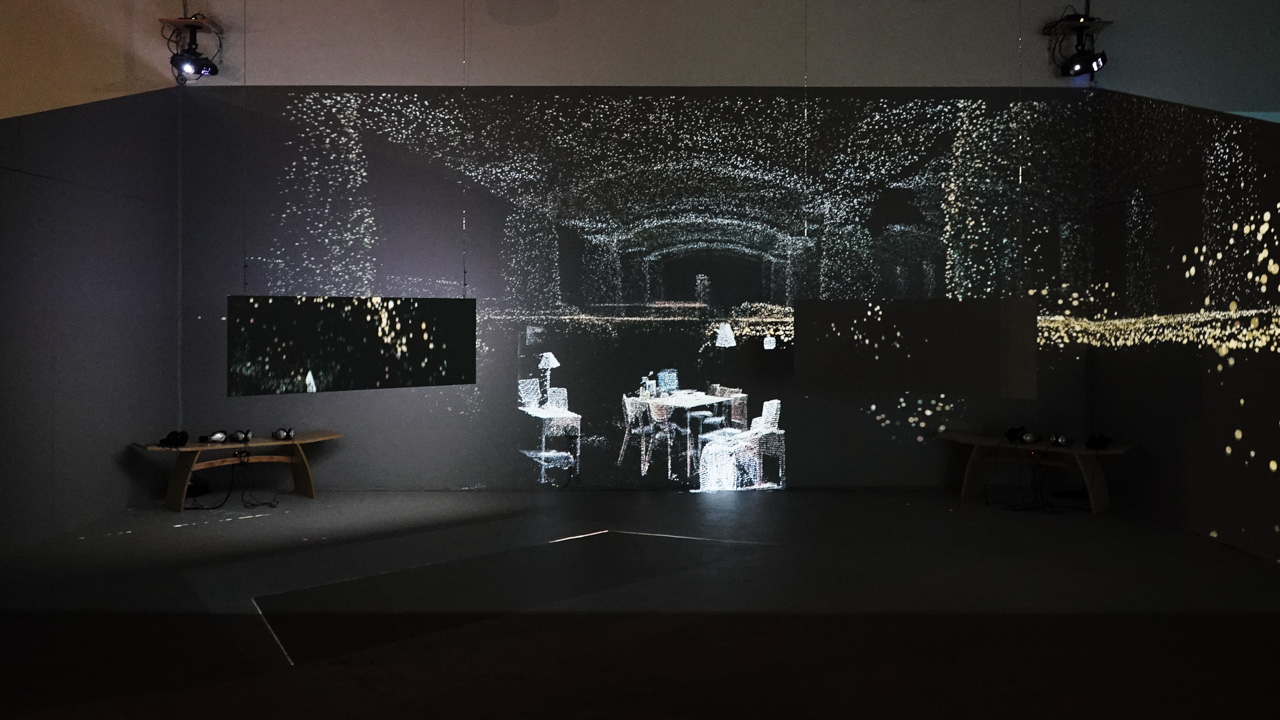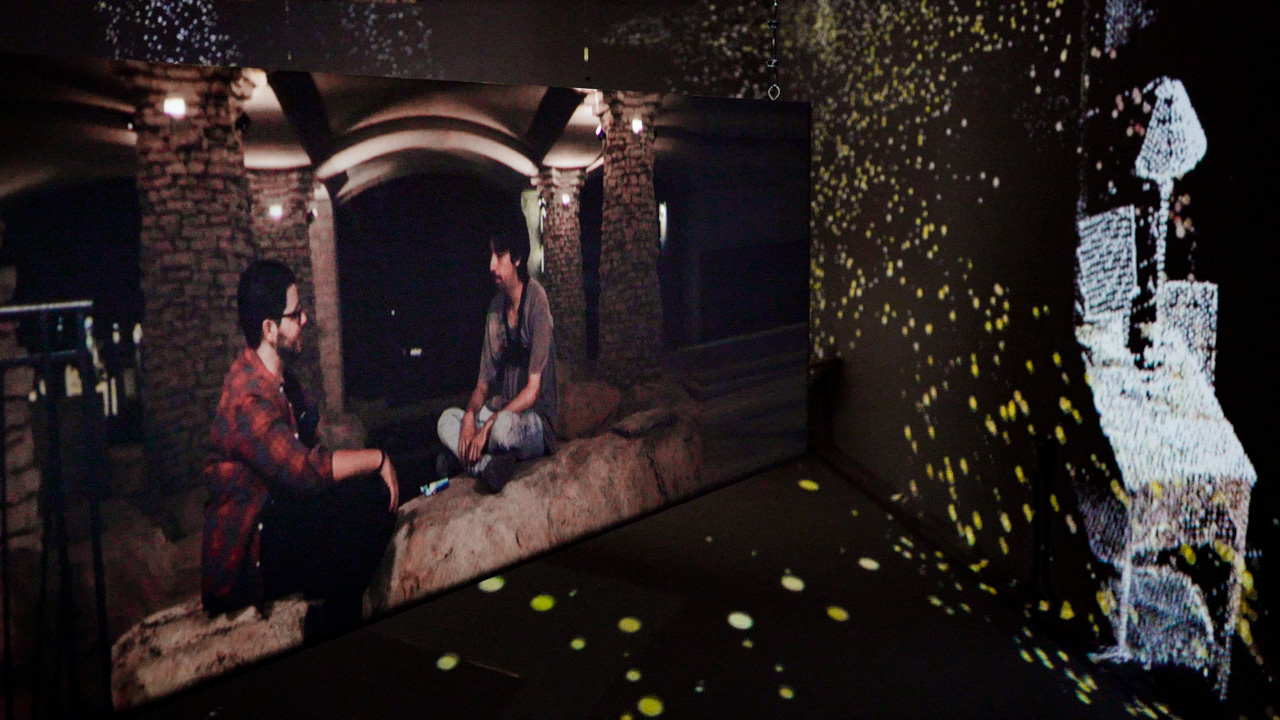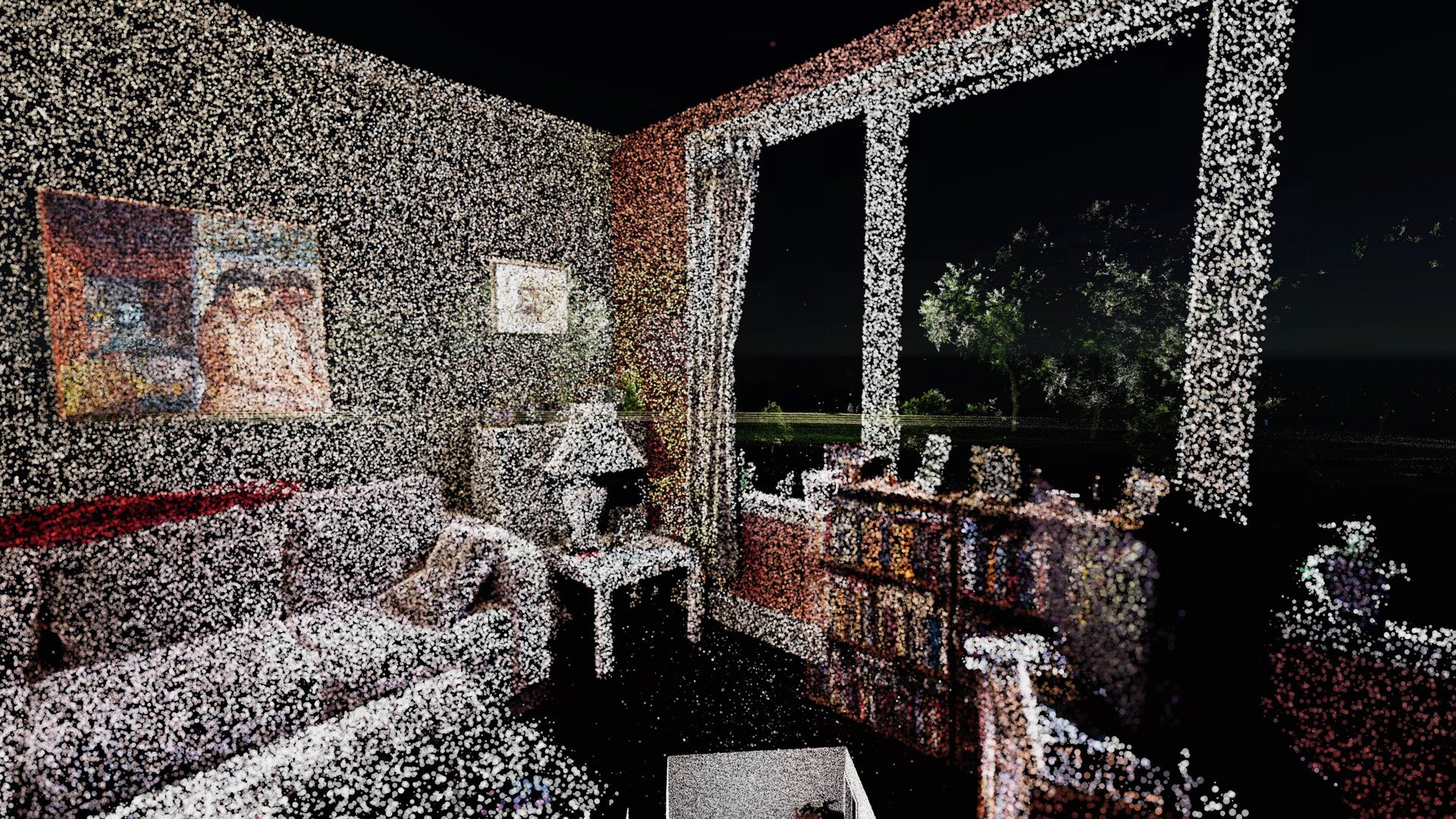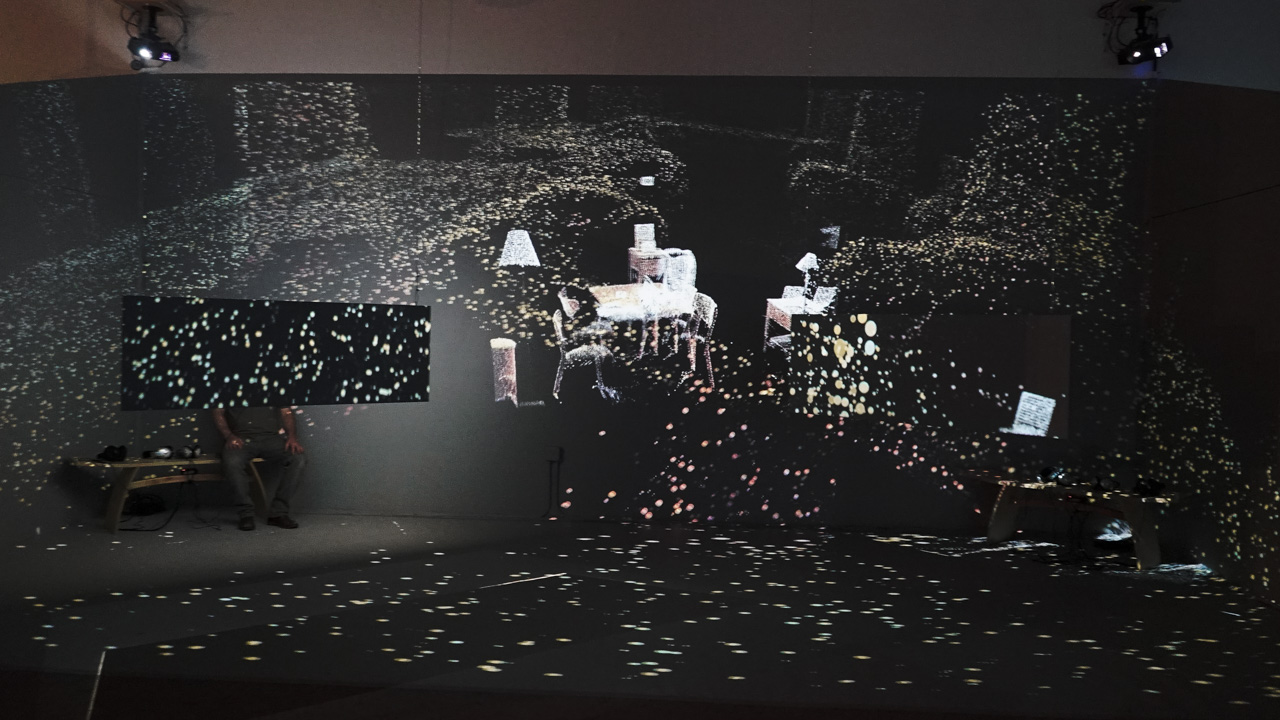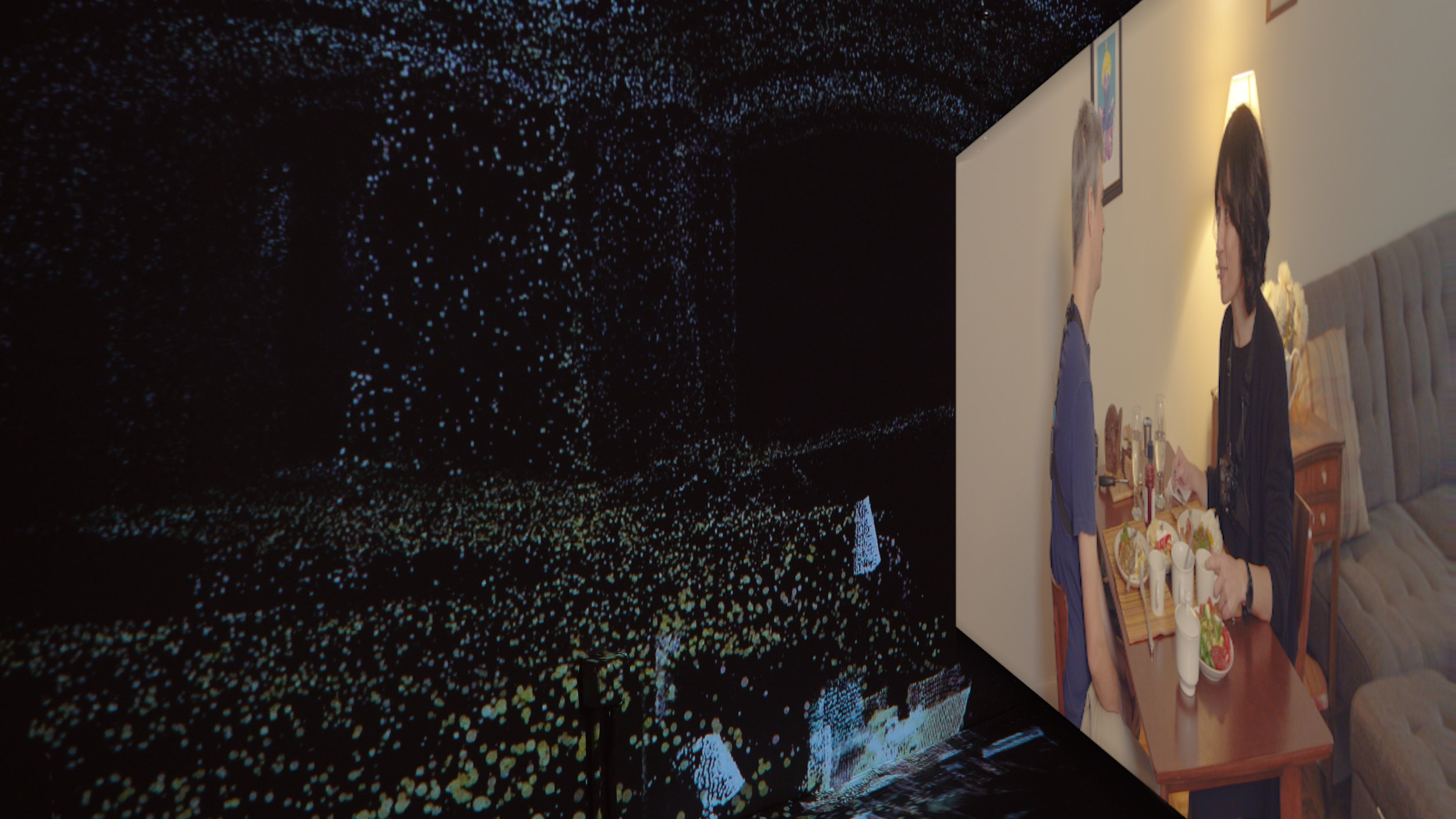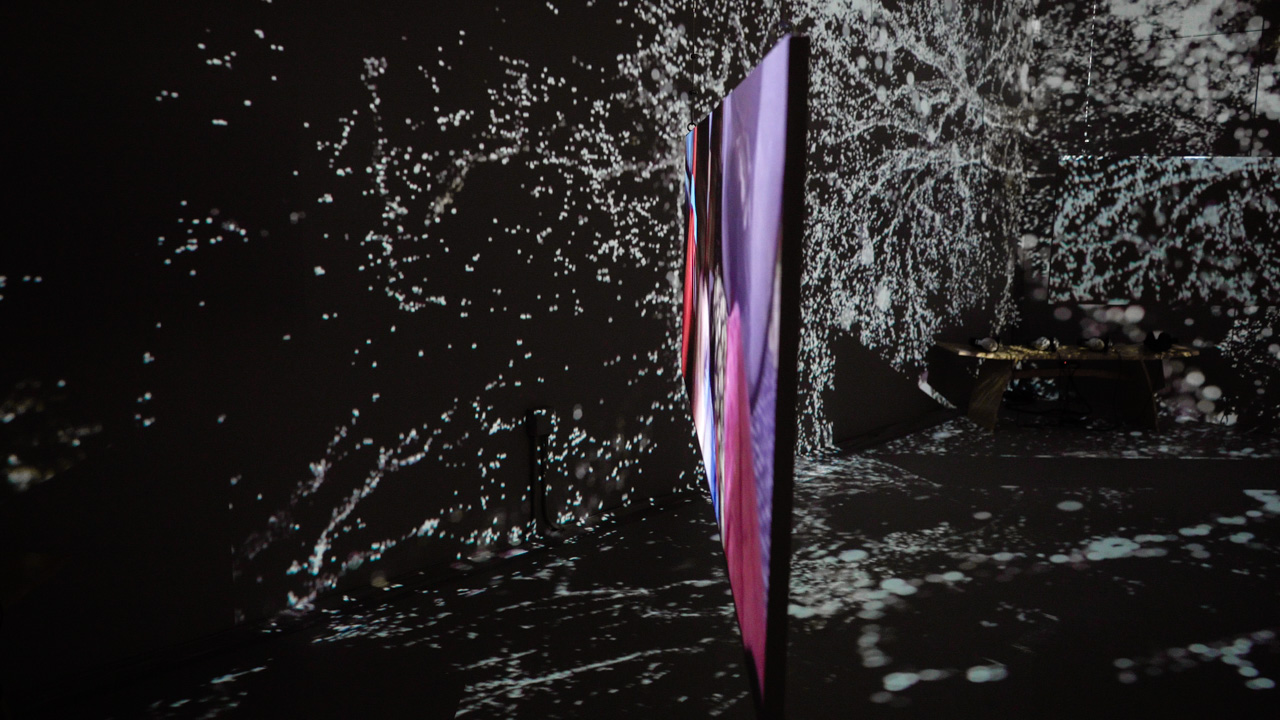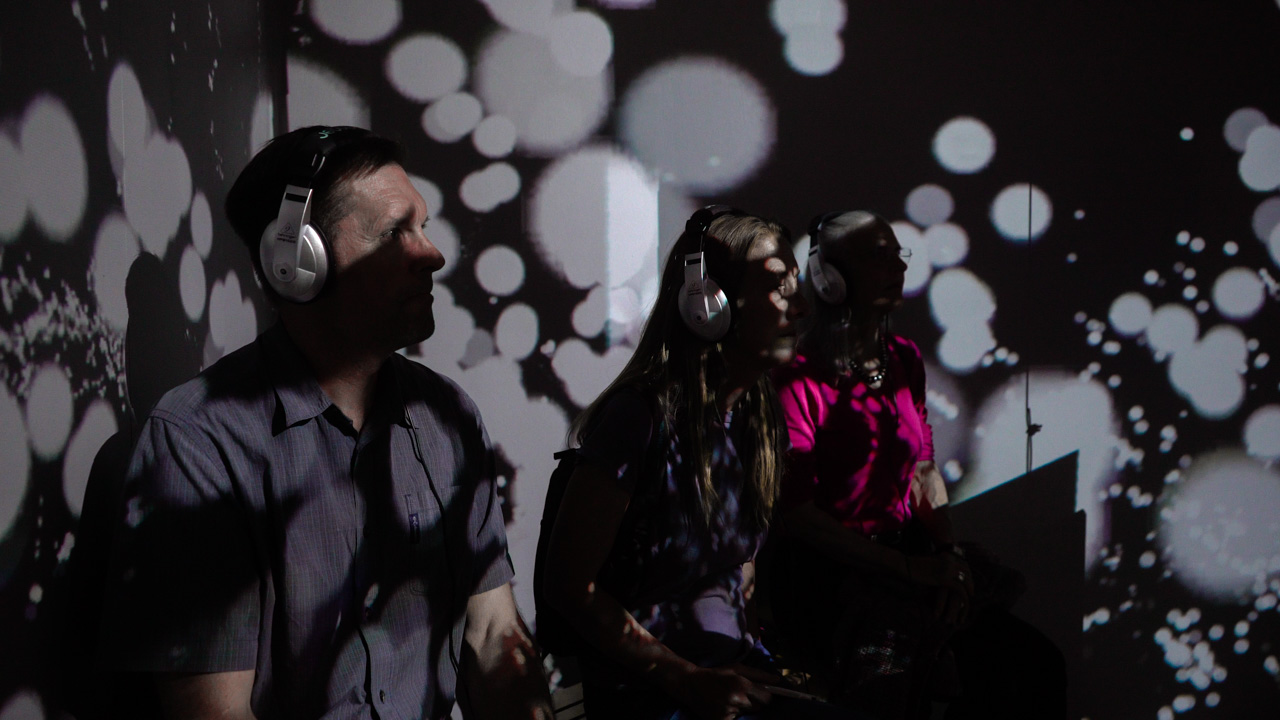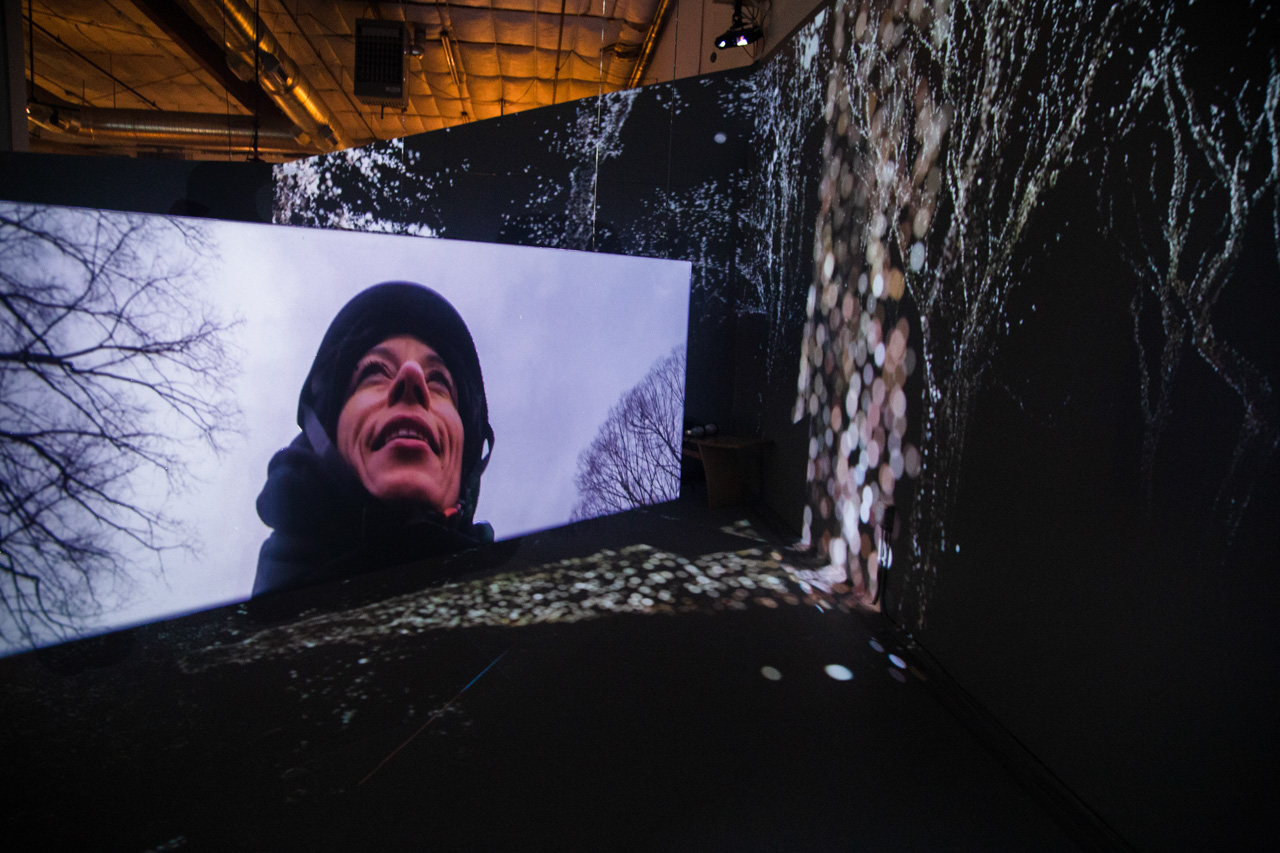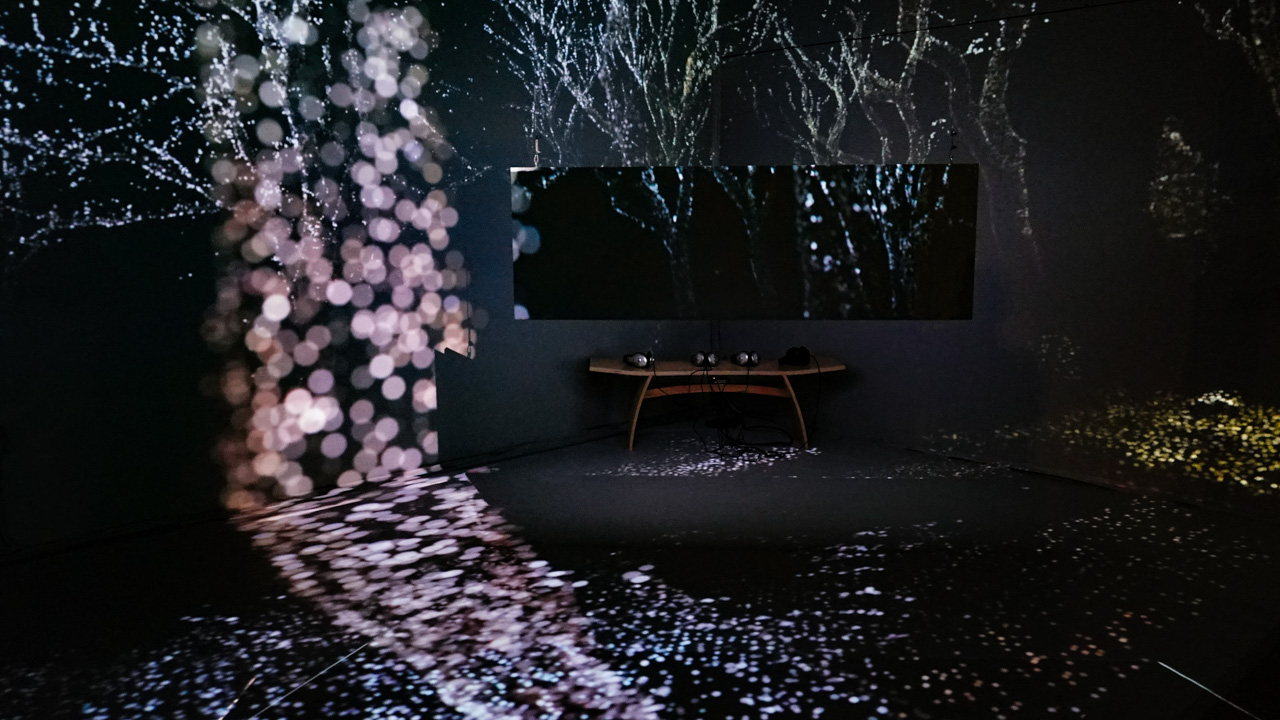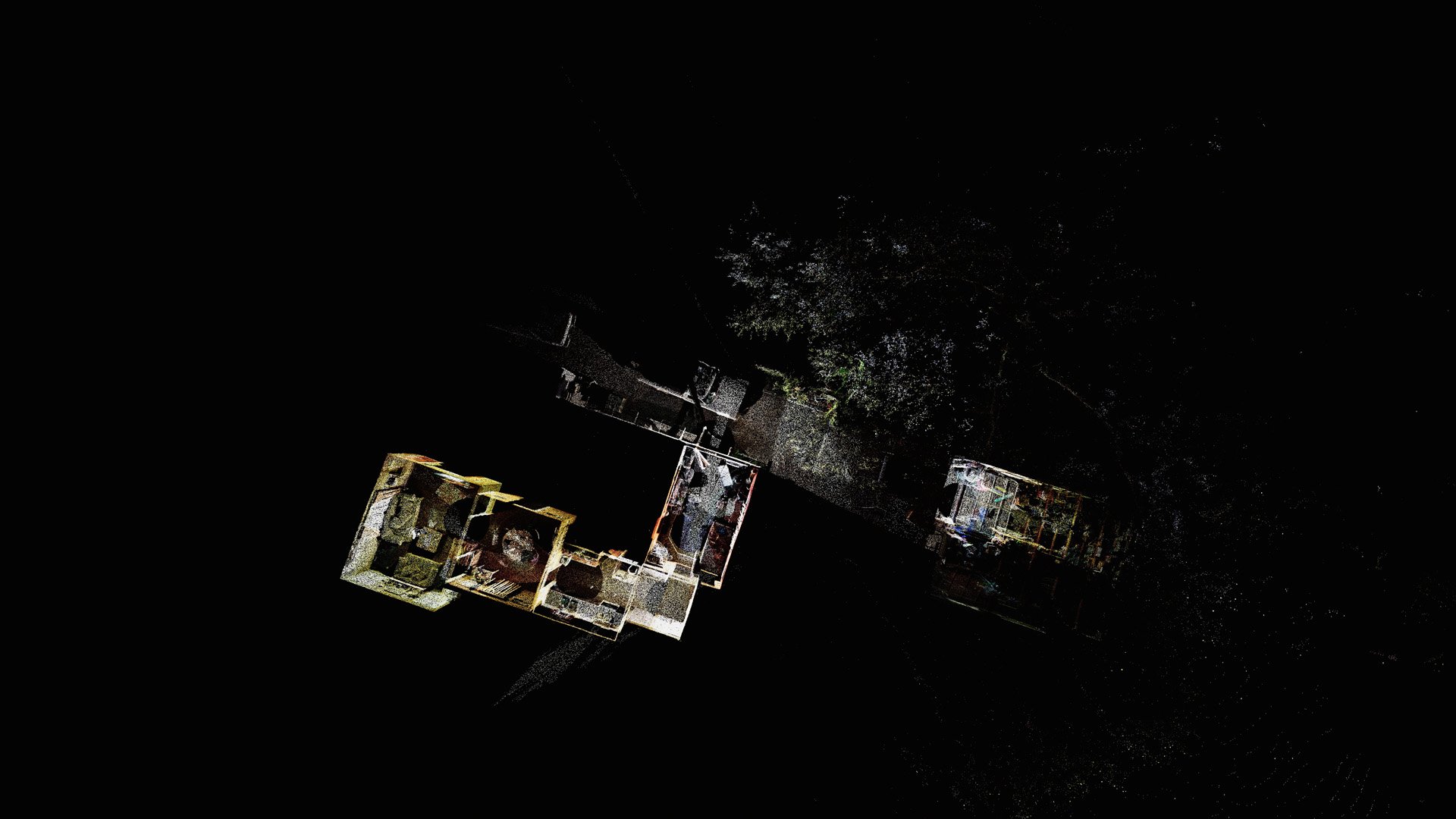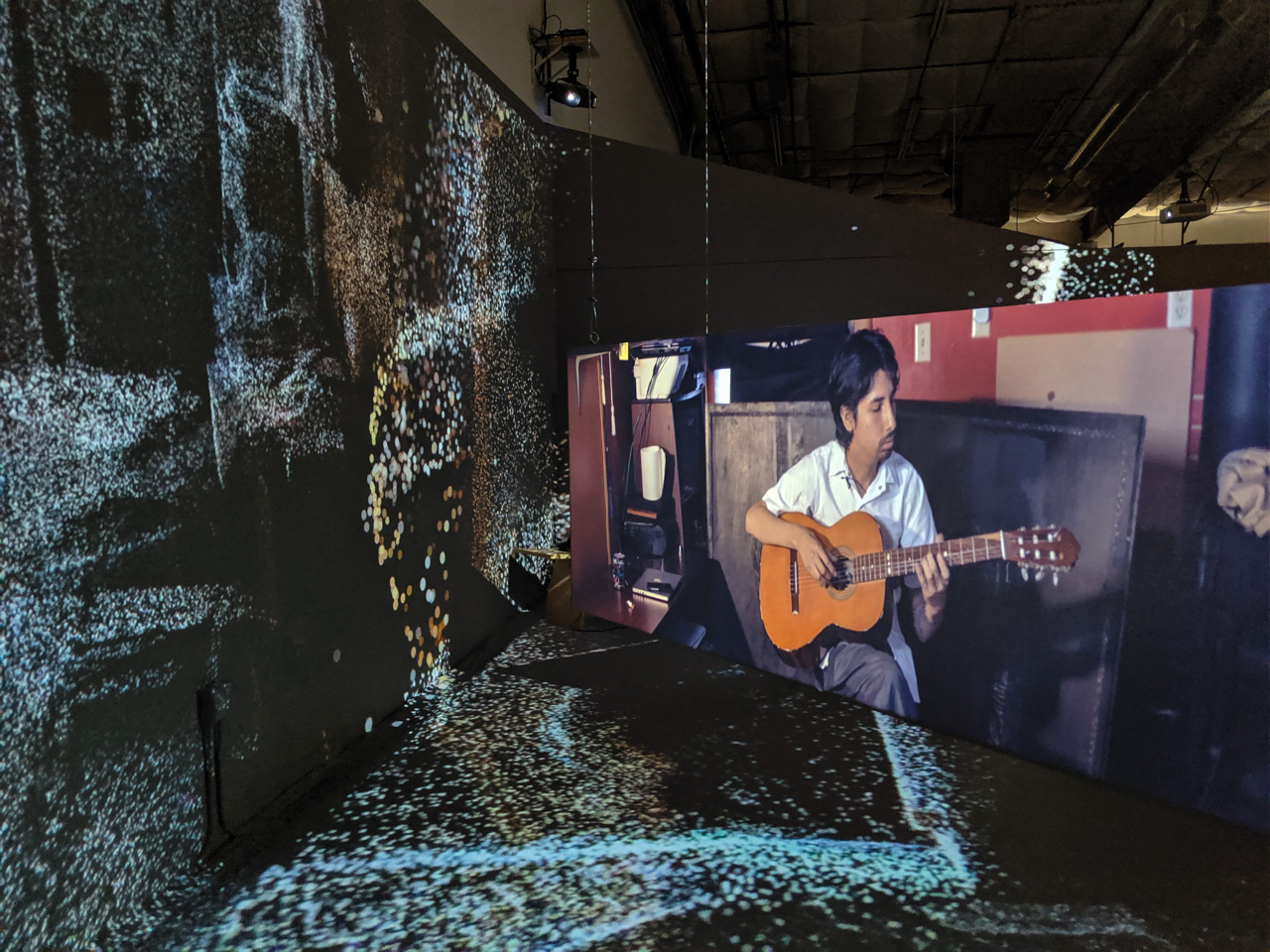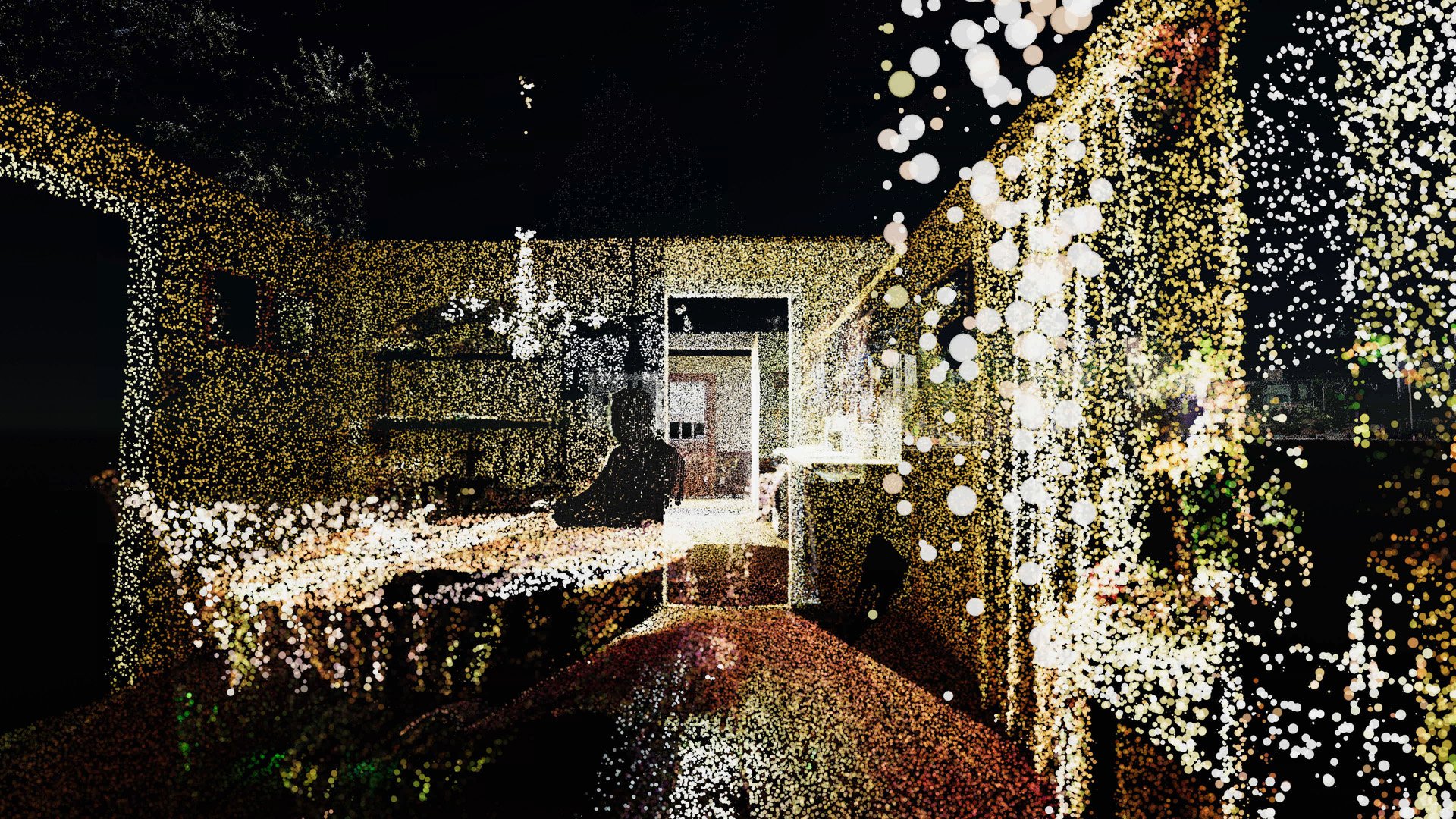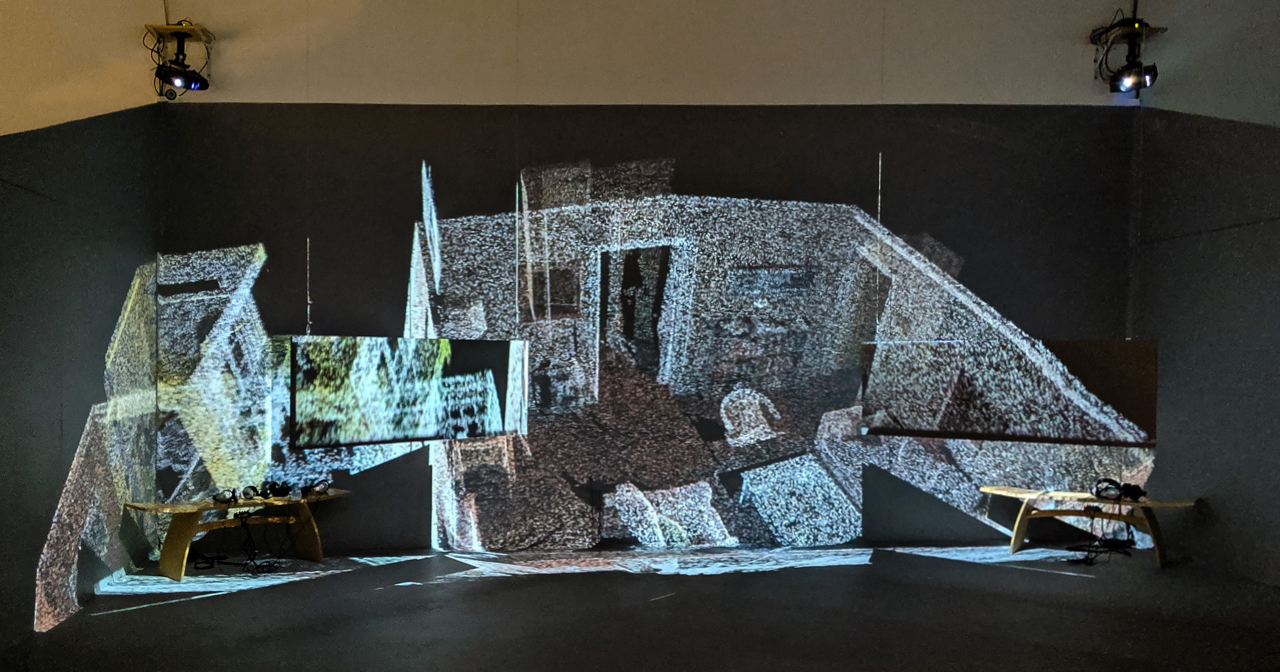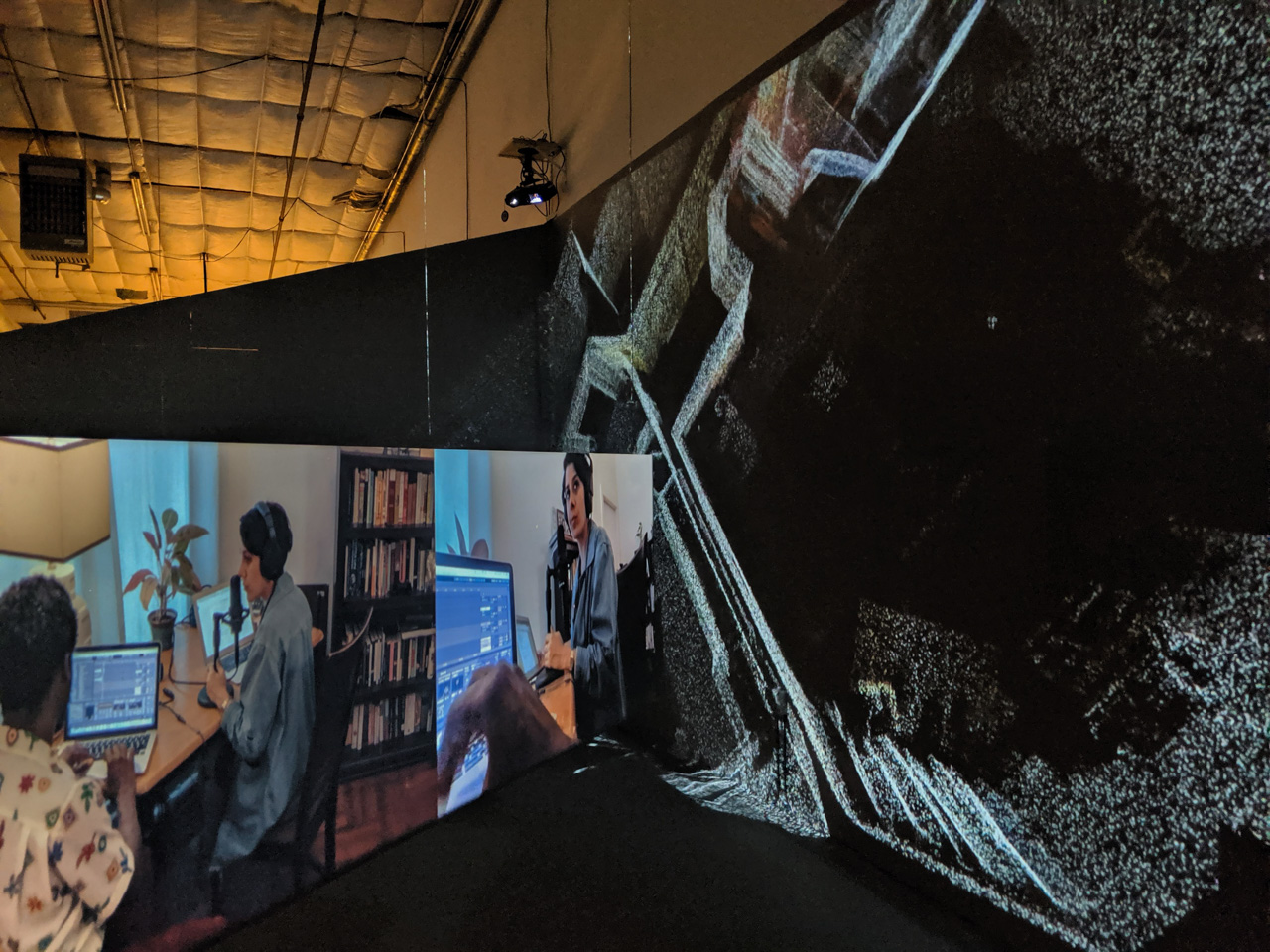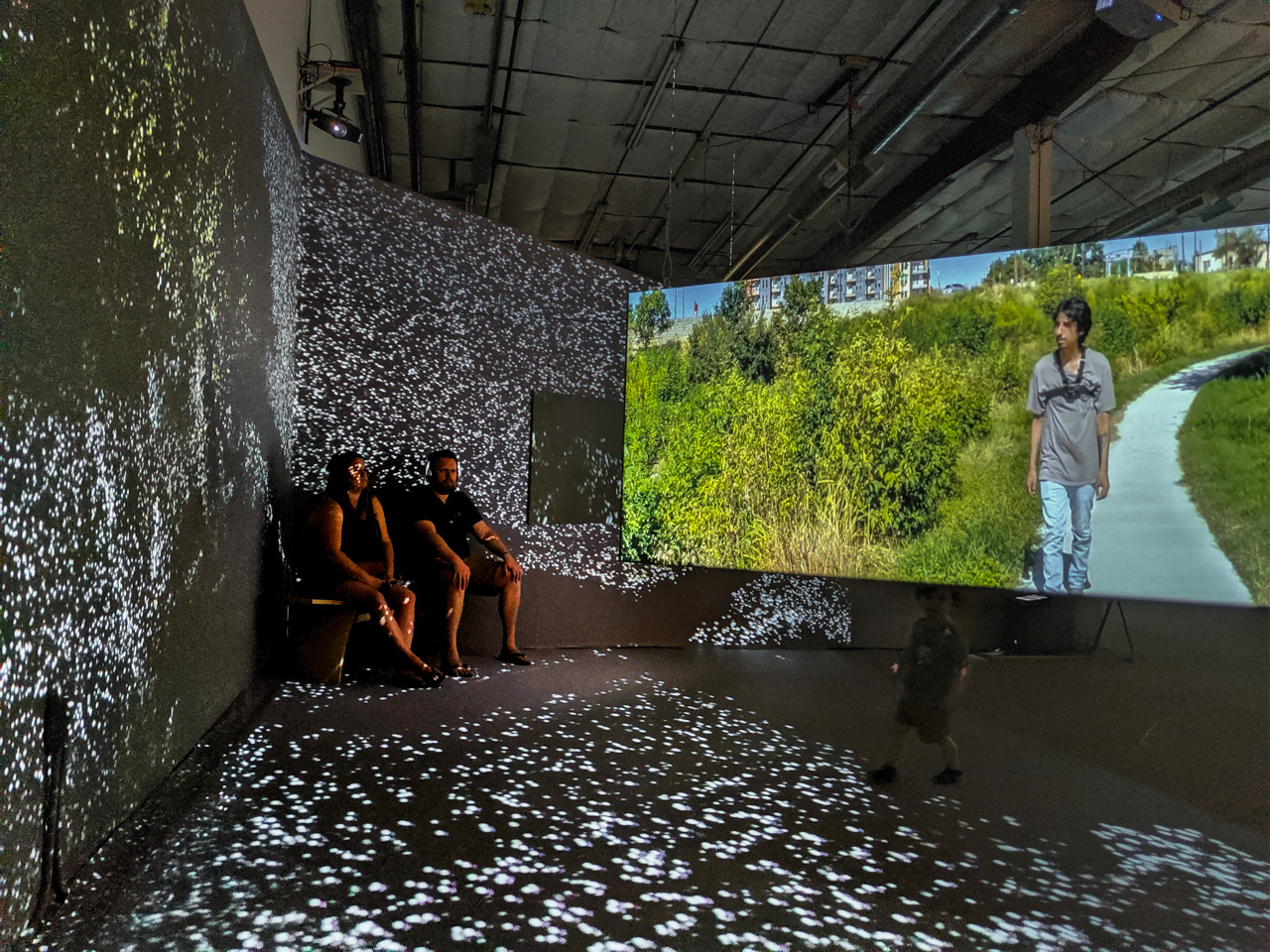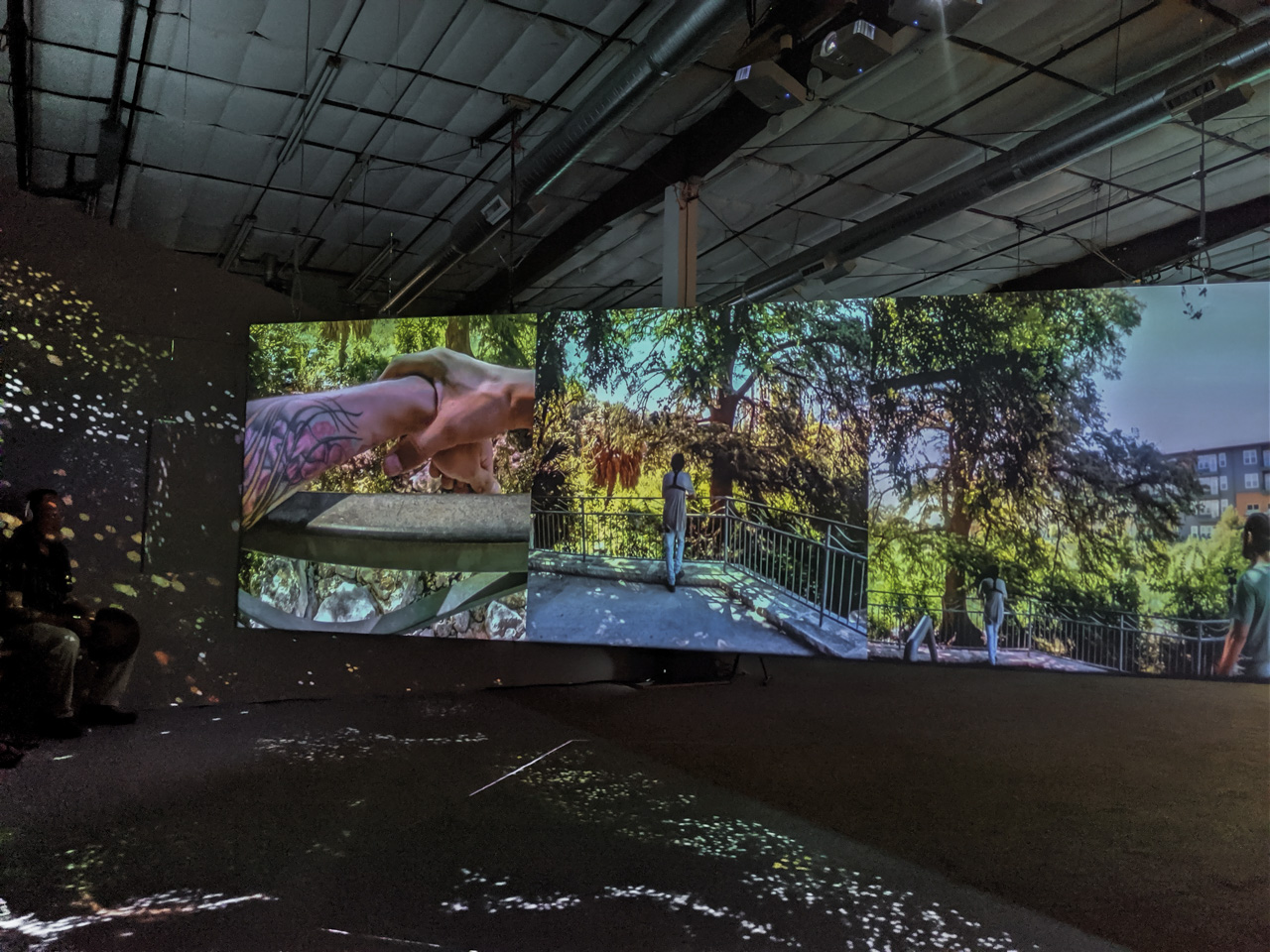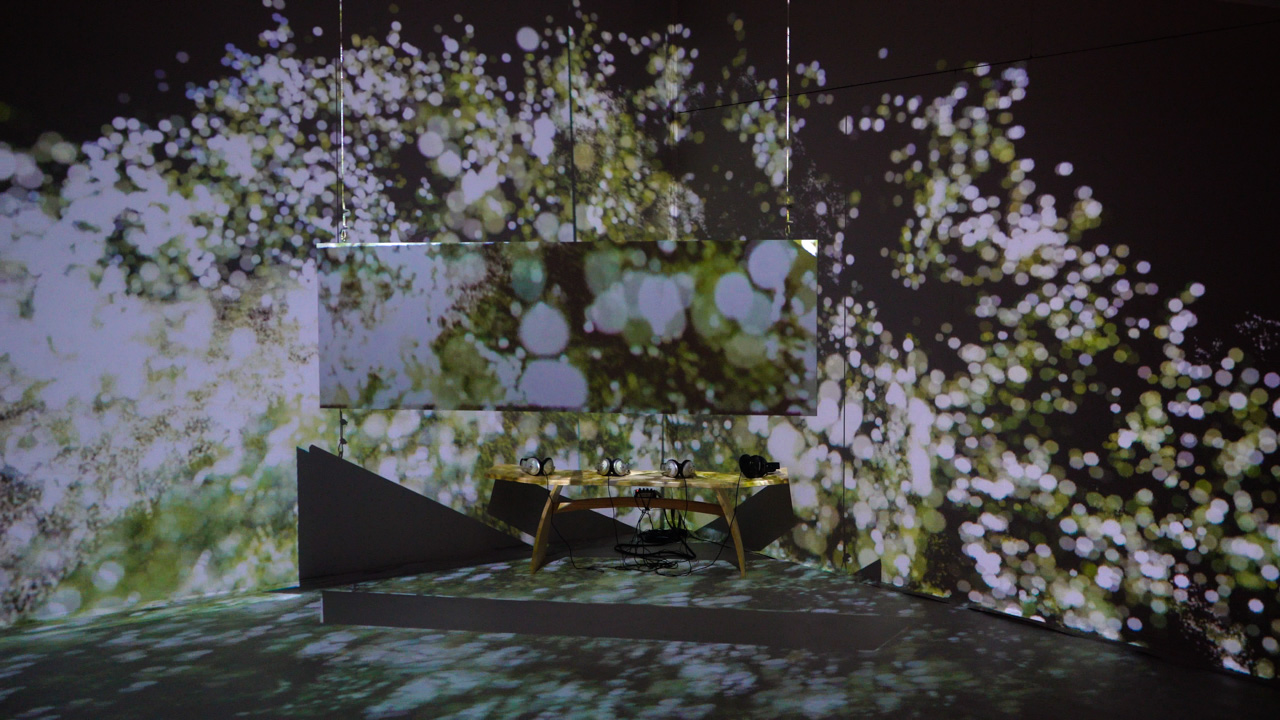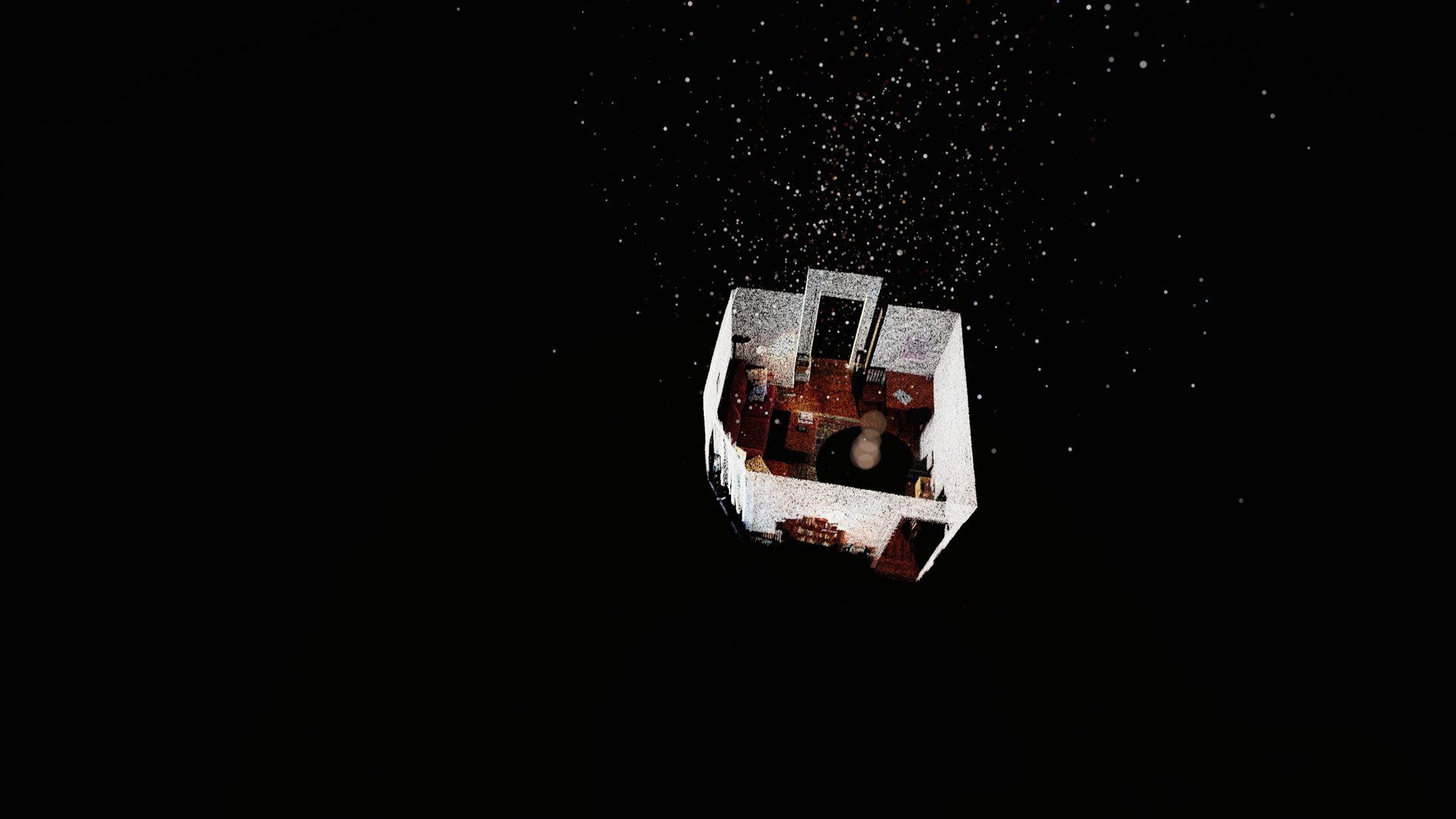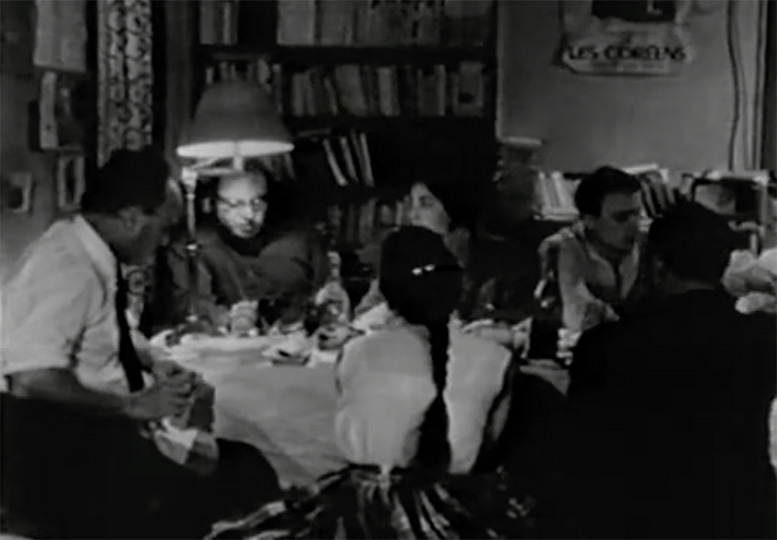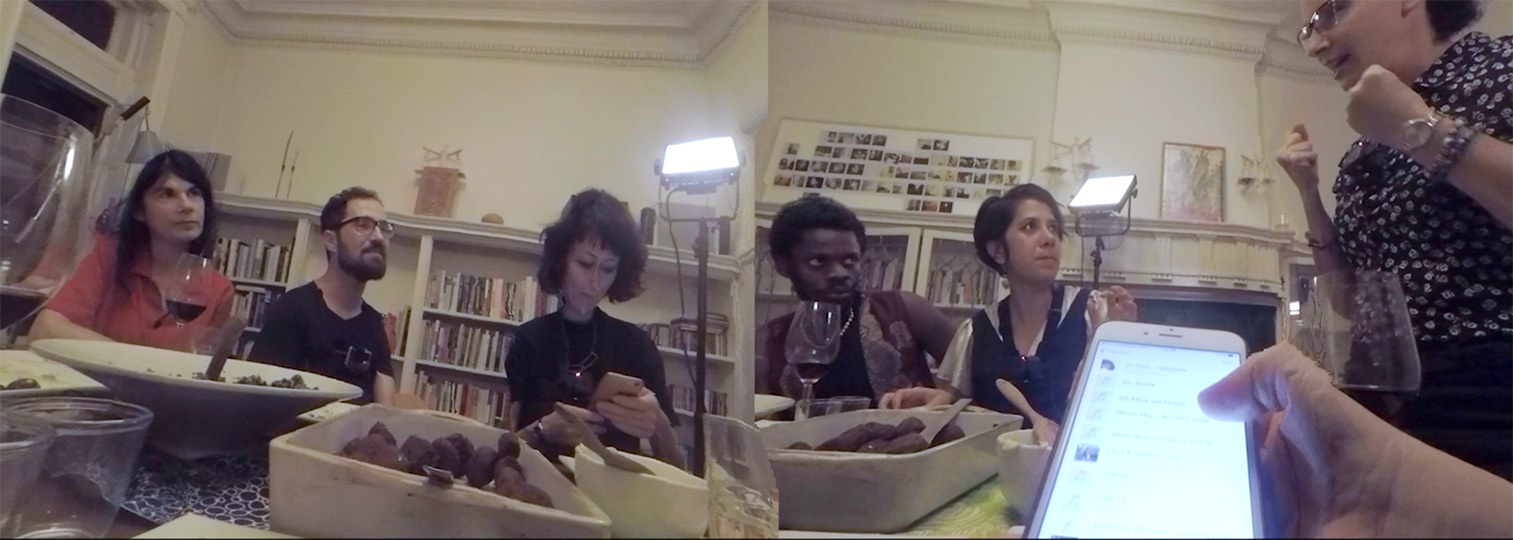
‘Chronicle of a Fall’, a feature-length immersive installation, depicts the fragmented, in-transit, experience of a group of immigrant cultural workers scattered around the contemporary US.
Paying homage to the classic ‘Chronicle of a Summer,’ the project updates the Cinema Verité approach using emerging technologies such as parallel body worn cameras, volumetric capture, and projection mapping.
News and Press
Exhibition website for our installation at Gallery 400, Chicago, May 27 - August 1 2022
An in-depth review on Hyperallergic of the Gallery 400 exhibition, June 2022
Selected for “Best Chicago Art Exhibitions of 2022” by the Chicago Tribune, December 2022
Documentation images of work-in-progress installation, Currents, Santa Fe, June 2019
Synopsis
‘Chronicle of a Fall’ loosely applies Verité classic ‘Chronicle of a Summer’ to contemporary U.S. as we look into the lives of a group of cultural producers, primarily from the Middle-East and Central America, who negotiate ideas like "home" and "happiness" in an increasingly precarious social/political landscape. The participants of ‘Chronicle of a Summer’, a 1960s documentary, discuss France which, while recovering from WW2, is on the brink of war and undergoing social change. The term "Cinema Verité" was coined by the film’s director to describe a truth generated by the camera rather than found outside it. Our project, ‘Chronicle of a Fall’, deals with the experiences of a group of immigrant cultural workers scattered around the US, as they react to symptoms of the country's social/political changes following the 2016 Fall elections.
Like ‘Chronicle of a Summer’, our film begins with a simple question: “What is home to you?” Our participants, all immigrants or immigrant born, exist in a liminal state. Many, including ourselves, have left one country in which democracy is cast in shadow for the US, only to find it too cast in a shadow of its own making. As in ‘Chronicle of a Summer’, our participants interview each other, gather for dinner, work, or wander with only the filmmakers as company. In our project, however, we confront a period in which electronic media itself has become a space to be navigated, a non-place in which our protagonists are immersed, often experiencing two places at once, or one place from multiple perspectives. Our participants exist between homes. To reflect the fractured nature of their experience, and provide an intimate insight into their daily lives, they are all equipped with body-cameras.
In order to create a connective space between their stories/viewpoints that is similarly fragmented and in transit, we capture their areas of belonging, whether indoors or outside. To this end, we make use of an architectural laser-scanner that converts places into 3D "point-clouds." Within the installation version of ‘Chronicle of a Fall’, the first-person, multiple-viewpoint videos are projected on the back of screens hanging from above. Around them, in the larger exhibition space, visitors are immersed in the semi-abstract, intertwined, and constantly slipping 3D scans and soundscapes of the participants’ homes. The latter create a world that envelopes and conceals the more intimate POV stories of love, loss, and longing.
Video
Below you will find two videos showcasing first the overall narrative and experiential scope of the project, and second, a walkthrough of the installation along with some background on its key elements.
TRAILER
For a general sense of the project, see the following trailer, containing excerpts from scenes with several of our participants and the animated worlds we’ve created for them, as well as documentation from the first iterations of the installation.
INSTALLATION WALKTHROUGH
The installation consists of one or more pairs of parallel videos, with each screen depicting the story of one of our protagonists, projected on the back side of a suspended projection screen hanging in an otherwise empty space. Most of this space, including the front side of the screens, is projected on, creating an immersive environment derived from 3D scans of the participants’ homes. Visitors are invited to literally “step into” this world, and explore the back side of the screens, that each display intimate documentary footage related to a character featured in the project. See the installation walkthrough video below for more details on how the it works in the space and a bit of conceptual background for the project and these choices:
Team & Contact
Nadav Assor, Co-Producer, Co-Director
Nadav Assor creates layered videos, sound works, installations, and performances engaging real and imagined places through embodied, polyphonic personal narratives, utilizing intimate connections and fragmented perspectives. Assor’s work has appeared internationally at venues including Transmediale Berlin, Oberhausen Film Festival, Fridman Gallery NYC, Gallery 400 Chicago and Arnolfini Gallery Bristol, with reviews in Artforum, Hyperallergic, Haaretz and the Chicago Tribune among others. He is an Associate Professor at Connecticut College, where he directs the Ammerman Center for Arts and Technology, and was an MIT Open Documentary Lab fellow (2019–2022). Many of his video works are distributed by Video Data Bank, Chicago.
Tirtza Even, Co-Producer, Co-Director
A documentary maker and video artist, Even's video-work has been shown at the Museum of Modern Art (NY), the Whitney Biennial, the Johannesburg Biennial, as well as in many galleries, museums and festivals in the U.S., Canada and Europe, including the Museum of Modern Art’s Doc Fortnight (NY), RIDM Festival (Montreal), and Rotterdam Film Festival. Her work has won numerous grants and awards including Artadia Awards (Chicago), Jerome Foundation's Media Arts Award, 3ARTs Visual Arts and Next Level Awards, Efroymson Contemporary Arts Fellowship, Illinois Arts Council Artist Fellowship, and multiple NYSCA and DCASE Individual Artist Grants; and has been acquired for the permanent collection of the Museum of Modern Art (NY), the Jewish Museum (NY) and Harvard University's Carpenter Center, among others. A professor at the School of the Art Institute of Chicago’s Film, Video, New Media, and Animation department, Even has been a featured speaker at programs such as MIT Doc Lab, the Whitney Museum Seminar series, SXSW Interactive Conference, the Digital Flaherty Seminar, ACM Multimedia and many more. Even’s work is distributed by Heure Exquise (France), Video Data Bank (U.S.), and Groupe Intervention Video (Canada).
Stefan Oliveira-Pita, Editor
Born 1983. Film Editor, Lecturer. Diploma at Film University Konrad Wolf, Potsdam. Since 2009 Oliveira-Pita has carried out numerous collaborations on international features, documentaries and art installation works. Selections include: Atlas (German Film Award Nominee), Furusato (Golden Dove), Lamento (First Steps Award), Portraits of German Alcoholics (Prix Dialogue Berlinale), Civil Servants (Grimme Award Nominee), Only a Day (German Film Critics Award), Family Business (NRW Film Award). Since 2014 he has been a lecturer at DFFB, Bauhaus Uni Weimar, HS Mainz. Alumni of Berlinale Talents 2016. His work has won the best Editing Award for Lamento at Sehsüchte 2014. Oliveira-Pita lives and works in Berlin.
Julian Flavin. Sound Designer
Julian Flavin is an artist and educator who joins L4E as the Associate Director of the Critical Media Lab. His projects spanning documentary filmmaking, installation, music, and writing have been featured at SXSW, Osheaga Music Festival, The Tinguely Museum, The University of Chicago’s Smart Museum of Art, and NYU’s Gallatin Galleries among others. Films and installations featuring his post-production sound work have screened at MoMA, IFFRotterdam, Cinema du Réel, the Viennale, DOK Leipzig, RIDM, Mostra São Paulo, Gallery 400, Union Docs, Visions du Réel, and Art of The Real. His most recent feature-film project "In The Sweet Arms” asks how our relationship to music shapes our politics, our deepest-held aspirations, and our language for understanding our position in the world. He is interested in the role art plays in experiences of mutuality and difference, and in the political interpretation of such experience. He holds an MFA from the School of the Art Institute of Chicago and has taught courses in filmmaking at Northwestern University and the School of the Art Institute of Chicago.
https://www.l4ecozoic.org/julian-flavin | julian.flavin AT mcgill.ca
Institutional support: this project was developed in part through a fellowship with MIT Open Documentary Lab, 2019-2021, with additional support from the School of the Art Institute of Chicago, Connecticut College, and the City of Chicago.


